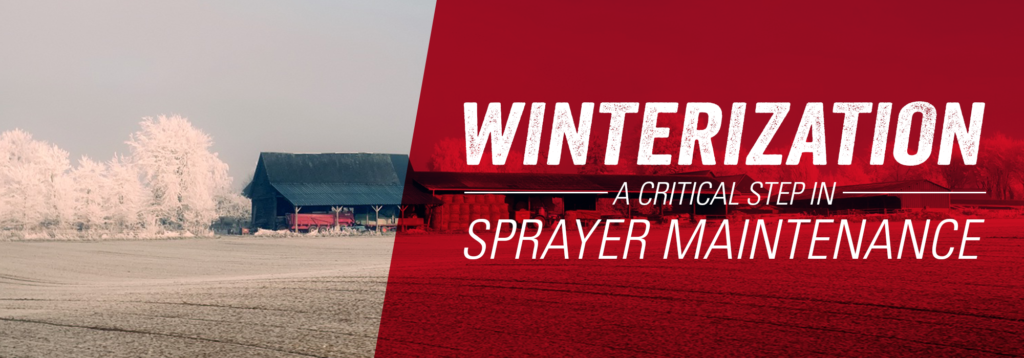
What is the biggest mistake to be made in ag sprayer maintenance? Skipping the sprayer winterization process. Besides helping you get a jump start on the busy season, winterizing and storing your Apache Sprayer can prevent damage caused by freezing temperatures, improve longevity and ensure your resale value.
“Winterizing a sprayer can become an ‘out of sight, out of mind’ situation, but colder temperatures have a way of sneaking up on us,” said John Casebolt, Equipment Technologies Senior Application Specialist. “Completing the winterization process as soon as your sprayer usage is done for the year will ensure the best-case scenario.”
Proper winterization can be done anytime following the last round of spraying in late summer or fall, but before the overnight temperatures begin dropping below the freezing point of water (32° F or 0° C), since water is the most common carrier for agricultural chemicals.
“Some people believe that plastic plumbing may not burst as easily because it is more flexible than stainless steel,” Casebolt said. “There are other folks who believe that stainless steel won’t freeze as easily because it is tougher. The truth is that both are susceptible to freezing, then splitting or bursting.”
Each step in the Apache winterization process is important to follow in order to successfully protect the spray system components against freeze damage. Not following each step and thoroughly purging each loop of the spray system can leave some of the liquid system plumbing and components vulnerable to cracking or bursting.
“The people who most often get hit with freeze damage are those who live in warmer climates where winters are typically milder and a sudden or early freeze catches them off guard,” Casebolt said. “Or it may be a dealer who has taken in a late-season trade and the owner had not winterized the machine.”
Avoiding winterizing because you live in an area where freezing temperatures are rare is a risky game to play.
“All it takes is one hard freeze and the next spring their plumbing system looks more like a sprinkler than a sprayer,” Casebolt said. “Over the years I have seen cast iron product pumps freeze and crack (about $1,400 to replace). I have seen flow meters and control valves crack (about $500 and $450, respectively, for standard Apache equipment). I have seen stainless steel boom plumbing freeze, swell to 1.5 times its normal size, then split. I have seen rectangular rinse tanks that were full of water freeze and swell until they were almost round because someone forgot to drain them. I have seen almost every clamped joint on a plumbing system have ice hanging from it because of poor, or a lack of, proper winterization.”
One of the less obvious problems that come as a result of frozen wet system plumbing and components is the timing of the repairs that need to be made.
“A grower or operator might take their machine out of storage one day, expecting to put water and chemical in it to spray the next day only to find the damage,” Casebolt said. “Now they have to wait for those repairs to be made while they know they should be in the field — it’s rough.”
With RV antifreeze costing anywhere from $3 to $10 per gallon (depending on brand, composition and quantity), a few hundred dollars for antifreeze and a couple of hours of work is money and time well spent when you consider the alternative.
“Some people choose to winterize using a liquid fertilizer combination that usually includes a form of nitrogen,” Casebolt said. “From a standpoint of preventing freeze up it can work quite well, but corrosiveness and ‘gumming up’ may be an issue when it is left in the system over the course of the winter. I would stick to the Apache winterization recommendations.”
No matter how you choose to approach sprayer winterization, it’s important that you do it before bone-chilling temperatures settle in. Remember, if you take care of your application equipment, it will help you take care of your crops season after season.
“When all is said and done, proper winterizing is a good preventive for unexpected, and sometimes costly, springtime repairs,” Casebolt said.
For more information and instructions on how to winterize your Apache Sprayer, read part II.


